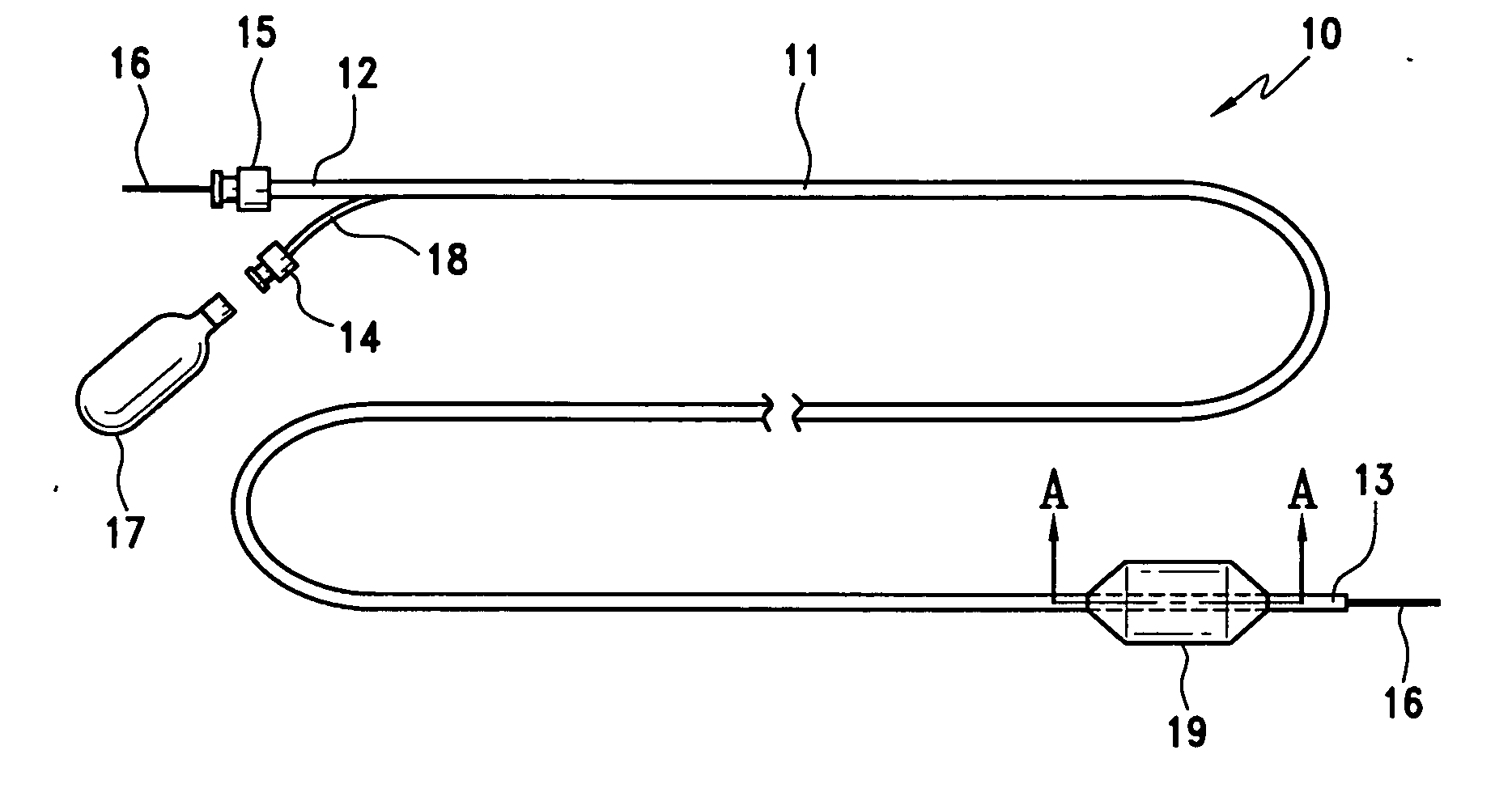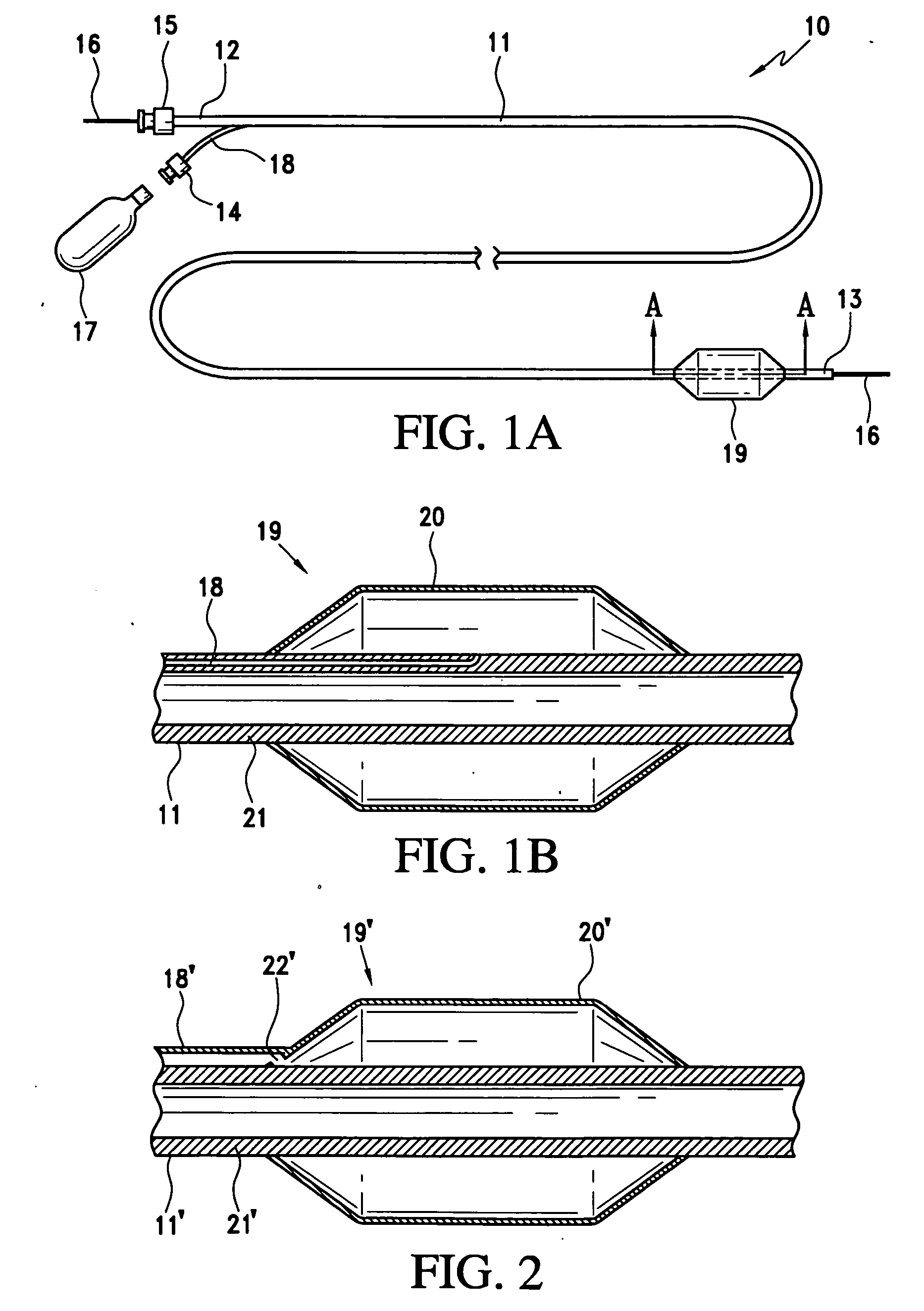Radiopaque-balloon microcatheter and methods of manufacture
a radiopaque balloon and microcatheter technology, applied in the field of microcatheters, can solve the problems of balloon rupture, limited and difficulty in extending diagnostic and treatment modalities
- Summary
- Abstract
- Description
- Claims
- Application Information
AI Technical Summary
Benefits of technology
Problems solved by technology
Method used
Image
Examples
Embodiment Construction
[0032] Referring to FIGS. 1A and 1B, a microcatheter constructed in accordance with the principles of the present invention is described. Microcatheter 10 comprises shaft 11, proximal end 12, distal end 13, inflation port 14, manifold 15, guide wire 16, fluid source 17, inflation lumen 18, and balloon 19.
[0033] Fluid source 17, preferably pressurized gas, such as carbon dioxide (CO2), helium, air, or other fluid, may be attached directly to inflation port 14, or may alternatively pass first through a regulation device to control pressure, flow rate, or other fluid properties. Fluid source 17 is in fluid communication with balloon 19 through inflation lumen 18. Fluid source 17 preferably comprises a CO2 tank having a regulator to control inflation of balloon 19 via inflation port 64.
[0034] In FIG. 1B, balloon 19 comprises flexible member 20 affixed to shaft 11. Inflation lumen 18 passes through wall 21 of shaft 11, so that a distal end of inflation lumen 18 communicates with the sp...
PUM
| Property | Measurement | Unit |
|---|---|---|
| Melting point | aaaaa | aaaaa |
| Radiopacity | aaaaa | aaaaa |
| aaaaa | aaaaa |
Abstract
Description
Claims
Application Information
 Login to View More
Login to View More - R&D
- Intellectual Property
- Life Sciences
- Materials
- Tech Scout
- Unparalleled Data Quality
- Higher Quality Content
- 60% Fewer Hallucinations
Browse by: Latest US Patents, China's latest patents, Technical Efficacy Thesaurus, Application Domain, Technology Topic, Popular Technical Reports.
© 2025 PatSnap. All rights reserved.Legal|Privacy policy|Modern Slavery Act Transparency Statement|Sitemap|About US| Contact US: help@patsnap.com



